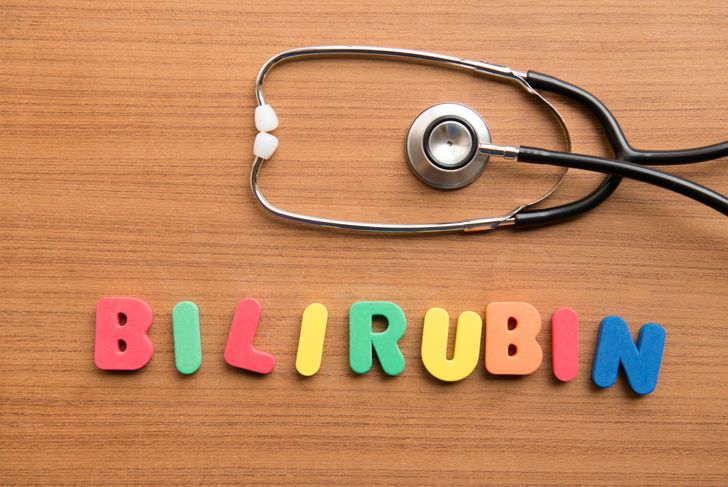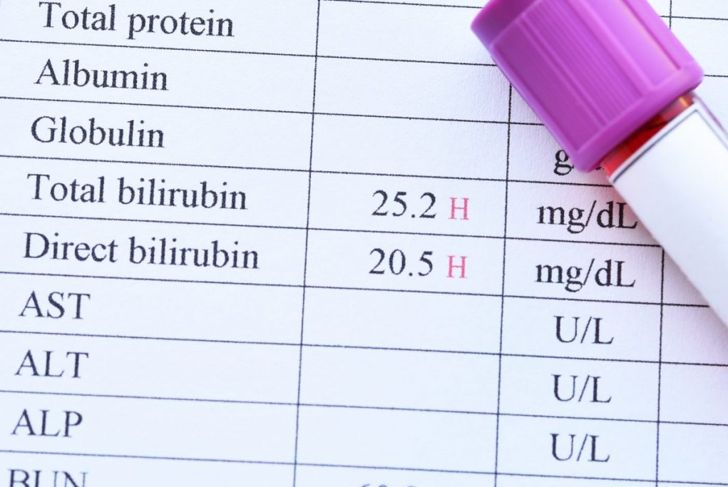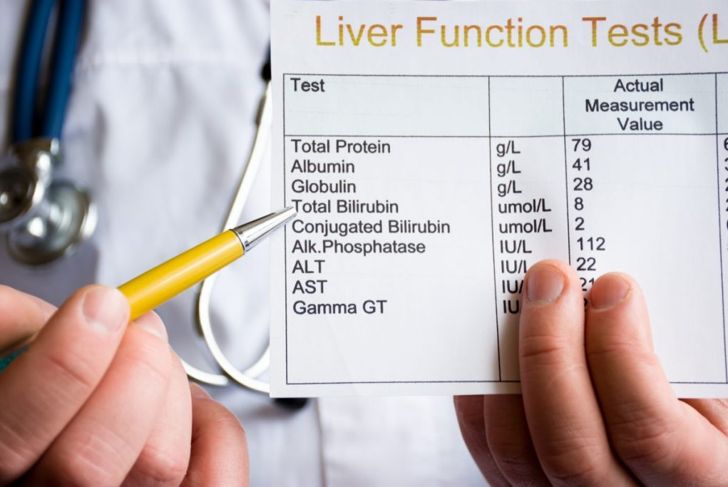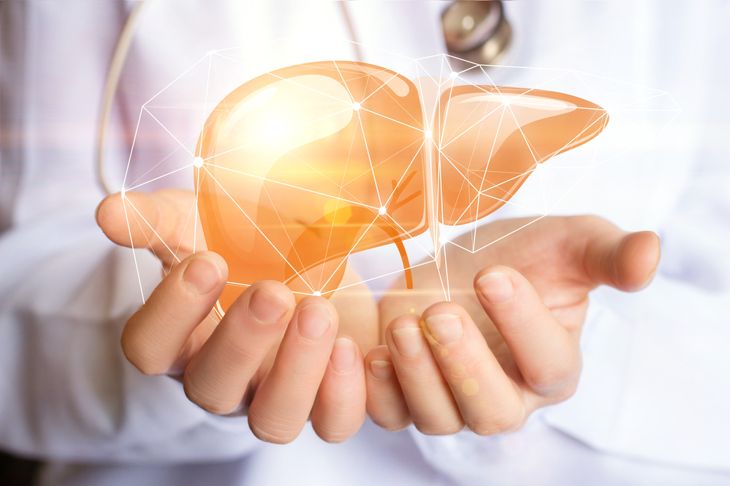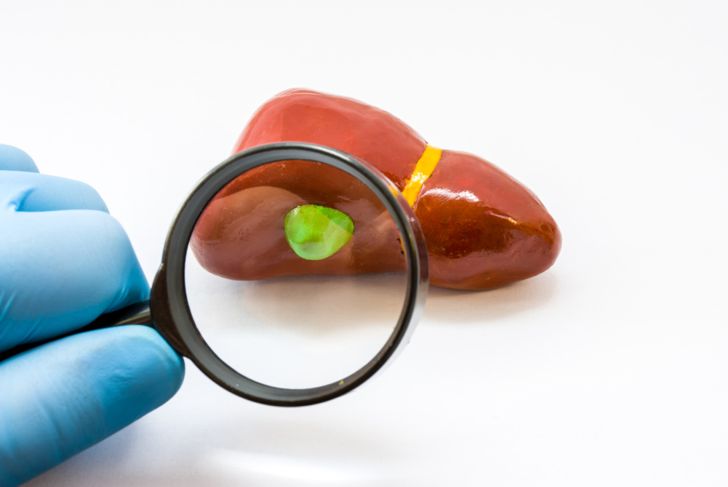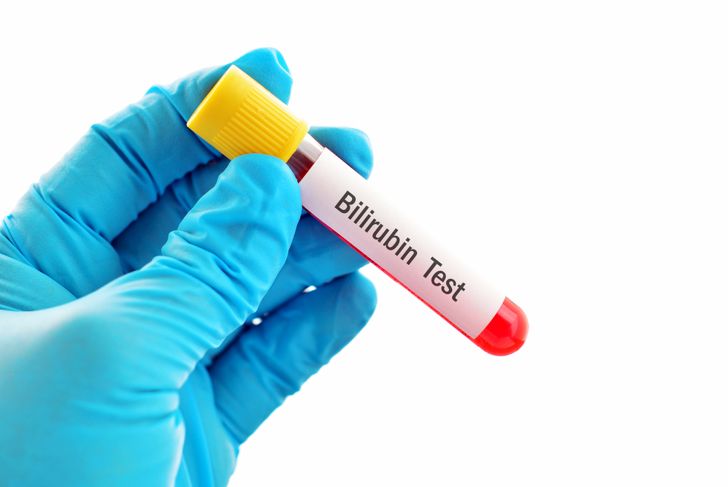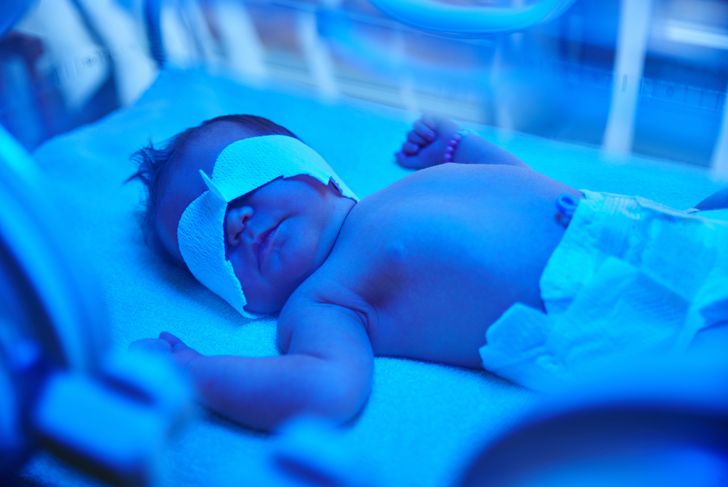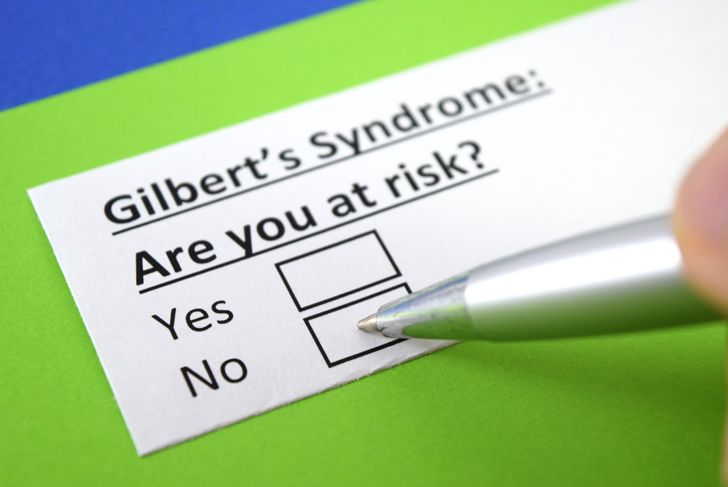The liver creates bile, a digestive enzyme that contains a reddish-yellow compound called bilirubin. This compound is responsible for the distinctive yellowing of the skin and the whites of the eyes seen in people with jaundice. It also causes the typical yellowish tint associated with a healing bruise. High or low levels of bilirubin in the blood may indicate liver disease and can be dangerous to infants and those with comprised immune systems.
What is Bilirubin?
Heme is an essential component of hemoglobin, a complex protein found in red blood cells. The breakdown of heme turns it into bilirubin. The hemoglobin carries oxygen from the lungs to the body’s tissues, then swaps the oxygen for carbon dioxide, transporting it back to the lungs. Eventually, the red blood cells die and leave behind bilirubin. The liver’s primary function is filtering the blood, and this includes disposing of bilirubin through feces and urine.
Unconjugated and Conjugated Bilirubin
At first, bilirubin is unconjugated, meaning it does not bind to chemicals in the body. It is not water soluble in this state due to the bond with albumin that enables it to travel through the body to the liver. In the liver, an enzyme called glucuronyltransferase changes the bilirubin into a conjugated (binding) state by removing the albumin, and the bilirubin becomes a component of bile. Bilirubin must be conjugated to be expelled from the body.
What’s a Normal Range for Bilirubin?
The normal range for total bilirubin levels in the blood fluctuates between 0.1 to 1 milligram per deciliter. The normal range for unconjugated bilirubin in the blood is zero to 0.3 milligrams per deciliter. These levels may differ slightly in children and women. Men have higher bilirubin levels than women. Certain foods and medicines also impact these results. In general, a total bilirubin level above 1.9 milligrams per deciliter is deemed elevated.
Dangers of High Levels of Bilirubin
Abnormally high levels of bilirubin in adult blood indicate a severe health condition. Typically, the body removes bilirubin through the urine and feces, and this keeps levels in the body stable. An injured or diseased liver may be less capable of processing conjugated (bonded) bilirubin. As a result, levels of unconjugated bilirubin begin to build up.
Causes of Elevated Bilirubin Levels
Many factors can cause increased bilirubin levels. People who consume a lot of alcohol are likely to have elevated levels. Illnesses triggered by the hepatitis virus can have the same effect. Pancreatic cancer and malignant tumors in the gallbladder can cause bilirubin to rise above normal levels. Gallstones trap the bile ducts, increasing bilirubin levels. Hemolysis, the excessive destruction of red blood cells, as well as tumors in the liver, are liable to increase levels of the waste product in the blood.
Testing Bilirubin Levels
The ‘Van Den Bergh Reaction Test’ is a blood test that checks bilirubin levels. Blood from the test subject is treated to make the red blood cells separate from the fluid or serum. The diluted serum mixed with a unique chemical will determine the level of waste product built-up in the blood. If the test detects elevated levels of bilirubin, a doctor will look at all the blood serum tests to confirm the results and identify damage to the liver. Additional tests could involve a physical exam, checking for a liver that’s enlarged or tender, and imaging tests (ultrasound or a CT scan) to visualize the liver. An endoscopy looks at the ducts through which bile travels through the gut, checking for obstructions. In rare cases, a liver biopsy is necessary, and the doctor will examine a small piece of the organ.
Treating Abnormal Bilirubin Levels
Determining the right course of treatment requires identifying the underlying cause of high bilirubin levels. If the reason is known, the patient may be able to reduce bilirubin levels with lifestyle changes such as abstaining from alcohol, or via medical treatments. For example, the Kernicterus condition affects newborn babies, and treatment requires the babies be exposed to natural or artificial light sources to change bilirubin (which is light sensitive) to its water-soluble form so it can be flushed from the body. Some drugs cause evaluated bilirubin levels, so reducing or stopping that medication will lower levels.
Low Bilirubin
Vitamin C can interfere with bilirubin tests and make the concentrations appear lower than they are. In general, lower-than-normal bilirubin is not a cause for concern.
Newborn Babies and Unconjugated Bilirubin
Very high levels of bilirubin can be severe for newborn babies, as the unconjugated form may damage developing brain cells, leading to neurological problems. About 60 percent of infants have jaundice because their bodies are not yet capable of removing enough bilirubin. It is not unusual to see high levels of unconjugated bilirubin in newborn babies.
Complications of Bilirubin Imbalance
Kernicterus involves critically high bilirubin levels. As prevention against brain damage, newborn infants with the condition are treated right away to bring down their bilirubin levels. Another condition linked to high bilirubin is Gilbert’s syndrome, a genetic disorder that is also hereditary. Individuals with this condition may experience failing livers which cannot sufficiently remove bilirubin.

 Home
Home Health
Health Diet & Nutrition
Diet & Nutrition Living Well
Living Well More
More